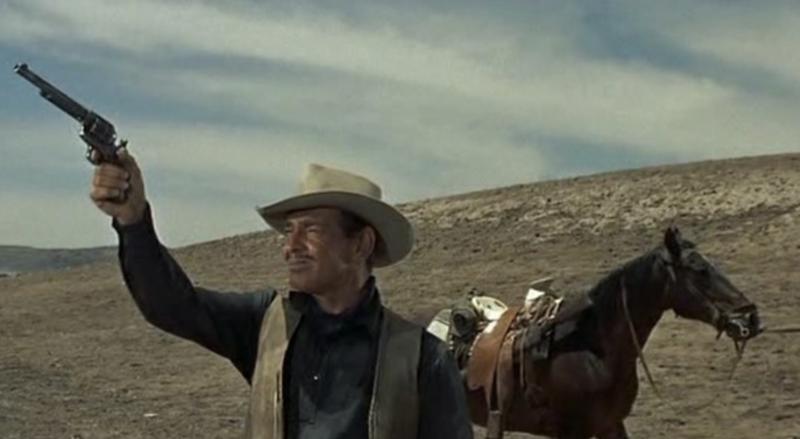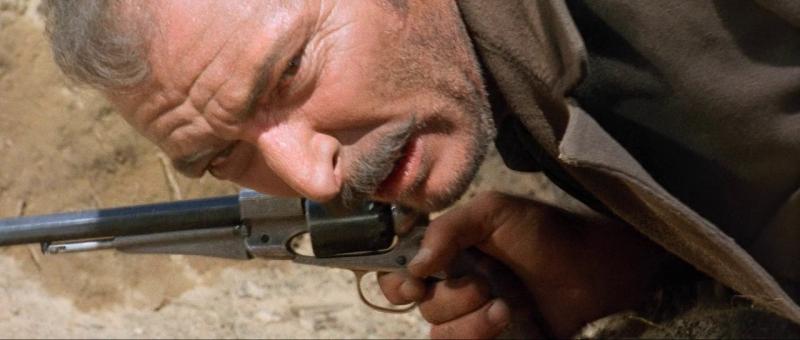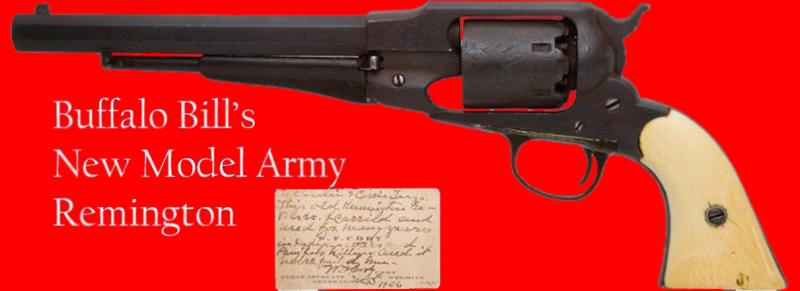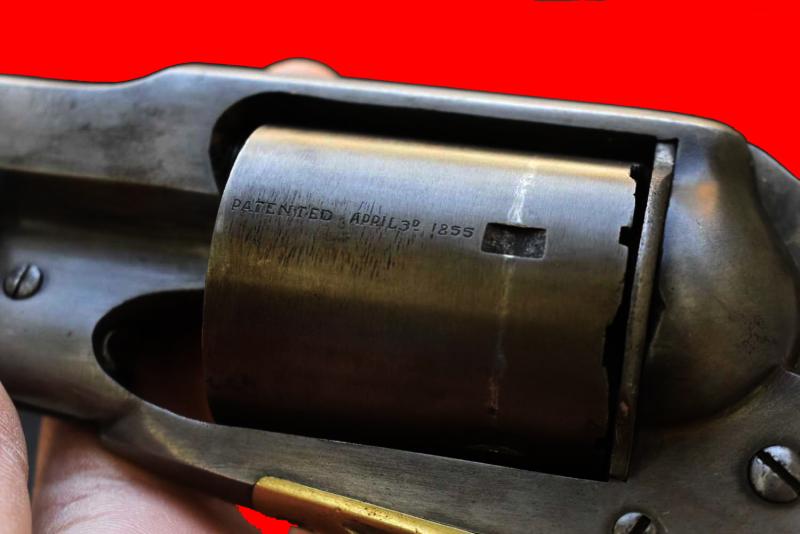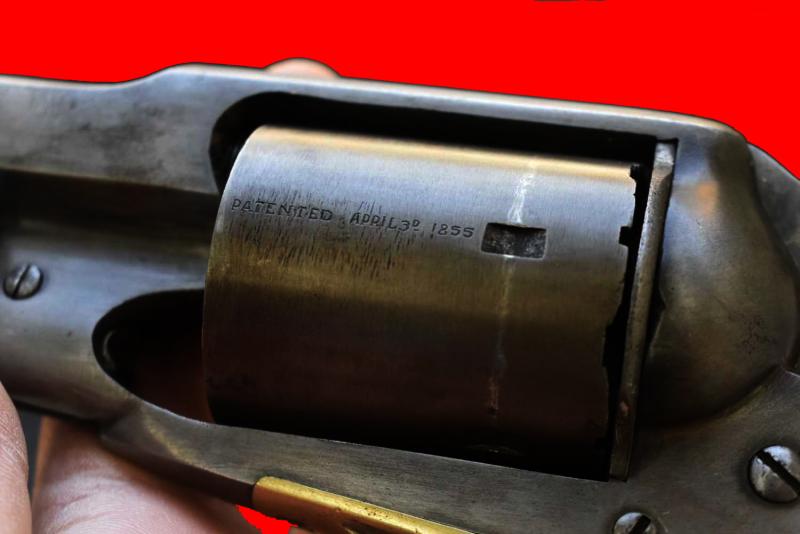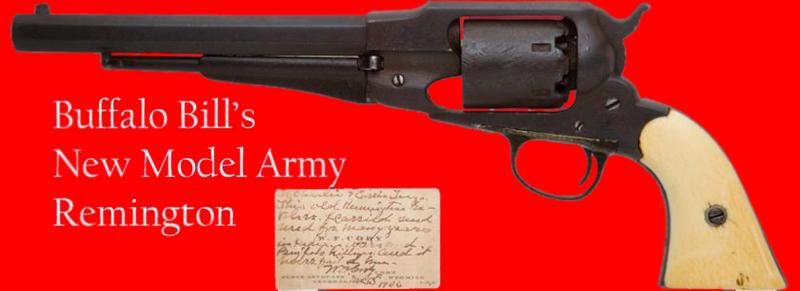A Rare and Original, American, Antique Civil War Remington Large Calibre Army Revolver, With an Original Wild West Rimfire Cartridge Conversion Upgrade. A Superb 5 Shot Revolver. One of The Most Interesting & Historical Guns of The Civil War & Frontier
In overall very nice condition indeed. The Remington Model 1858 was a cap & ball (also called "percussion") 44-calibre revolver, {upgraded to the larger .46-cal. rim fire in 1868} and used during the American Civil War from its close, then this rare pistol was converted to a larger cartridge, a seperate serial number added to the barrel underside, and re-finished addressed etc. and sold for use in the Wild West era onwards.
It was first used primarily as cap and ball by Union soldiers, and widely favoured over the standard issue Colt Army Model 1860 by those who could afford it, due primarily to its durability and ability to quickly reload. Of course if a gun such as this was captured in a Confederate victory it would be eagerly used by its new southern states owner as a highly prized trophy of war. It also saw considerable use in the American West, both in its original cap & ball configuration and as a metallic cartridge conversion.
At the end of our Civil War, the need to rearm with cartridge arms was an obvious imperative and signaled the end of the muzzleloading era worldwide. America was exhausted and money was tight in both the treasury and people’s pockets, yet the superiority of the copper-cased rimfire round to the paper cartridge couldn’t be ignored even though the obvious limitations of the rimfire system were soon evident. U.S. Civil War General Hiram Berdan’s bolt-action rifle, paper-patched bullet in a drawn brass case ignited by his Berdan primer electrified the world, but our Congress was in no mood to pay royalties on a new rifle and cartridge however superior—even to one of our war heroes—and our military became saddled with an inefficient inside-primed, copper-cased round developed at our arsenal for use in cartridge muskets initially converted from the vast stocks of muzzleloaders on hand.
Handguns were a different matter entirely. Smith & Wesson had locked up the bored-through cylinder patent necessary for the use of a cartridge, but only made .22s and .32s—hardly what a soldier or Indian fighter wanted to war with. The Army having to fight the war with a percussion handgun after seeing how well the Spencer and Henry cartridge rifles fared had no choice for a cartridge handgun with S&W working to renew the patent set to expire in 1869. The market was equally ready for a suitable belt-sized cartridge revolver, and the 1858 Remington was a nearly perfect platform.
While working on their own big bore, Smith & Wesson contracted with Remington to convert 4,575 1858 Army revolvers for a new .46 Short Rimfire cartridge. Of these, 4,141 were sold to wholesaler B. Kittredge & Co. in Cincinnati, Ohio for $3.36 each. That clearly puts these “modern” revolvers in the path of the folks heading West after the war. Due to the hand engraved cylinder patent date of 1855 we believe this is one of those very few intriguing revolvers. Matching six figure serial numbers on the barrel and grip frame, with matching cartridge conversion company serial numbers 2777 also on the barrel and grip frame. Several inspector's marks throughout.
There is a reason the .44 Henry wasn’t shoehorned into the first cartridge revolvers. The rimfire cartridge was nominally a .45. The “.44” in the percussion caliber is for the bore diameter, and the groove diameter was a .45. The conversion process was a lot cheaper without having to install a new barrel, and plenty of the old barrels and revolvers were on hand. Remington already chambered a .46 Long rimfire in Rolling Block carbines for use in the Civil War, and it easily transitioned into a rimfire handgun round with a shortened case and lighter heeled bullet. All these early cartridges, closely duplicated the ballistics of the combustible paper cartridges used in the percussion revolvers.
These first Remington Army conversions have been given the nickname “thin plate conversions” by collectors and were made in three versions. None had loading gates, and that likely made life interesting for those who held the revolver muzzle up while cocking! Perhaps the outside-lubricated bullets were sticky enough to keep the rounds from rocketing out. The original large rimfire was an easy transition to the 1858
A prized possession of the Remington Arms Company is a similar, original, New Model Army with ivory grips once carried by William F. "Buffalo Bill" Cody {see photo in our gallery}. The historic revolver is on display with Cody's simple handwritten note, "It never failed me". Cody carried the revolver in original percussion form well into the cartridge era, but didn't converted it to cartridge use. The Remington “Army” .44 percussion revolver was the primary competition to the Colt M1860 .44 percussion revolver during the American Civil War era. Although Sam Colt was the better salesman and marketer, Remington eventually beat Colt out of their military contracts by delivering a comparable (some felt superior) product for less money. In 1864, after the US government had finally beat Colt’s price down to $14.00 per revolver, they had been paying $20.00 or more per gun in the early days of the war, Remington agreed to furnish their “Army” revolver for only $12.00 per gun. That ended the reign of the Colt Army as the first choice for the Ordnance Department procurement officers.
In the field, even though the Colt revolver had the name and the mystique, many cavalry troopers preferred the much sturdier solid frame design of the Remington revolver. According to the research published in Remington Army & Navy Revolvers 1861-1868 by Donald L. Ware, Remington revolvers through serial 149,000 were accepted prior to the end of the Civil War. No license required to own or collect.
The New Model Army pattern
long 8 inch sighted octagonal barrel, stamped with the manufacturer's details and stamped with the serial no. 12XXXX to the underside, usual plain cylinder, usual plain frame, brass trigger guard, good two-piece varnished wooden grips.
Frank and Jesse James both owned and used Remington cartridge revolvers, at least two of which still exist: Frank’s No. 5116 and Jesse’s No. 559. An outlaw known as “Redtop” Callihan was wearing a large calibre cartridge Remington when he was gunned down in Bodie, Calif., in 1892 after allegedly killing six men with it. Businessman R.H. Bain went to Alaska with his Remington and reportedly shot two claim jumpers with it; its original belt, with holster, is stamped “KENNEDY HARDWARE, ANCHORAGE ALAS.”
This is an original antique, historical, collectable with no licence required to own or collect.
One photo in the gallery of Lee Van Cleef in ‘the Good the Bad and the Ugly’ with the Remington New Model Army.
Another photo of Clark Gable using his Remington New Model Army.
For ref;
The Cartridge Era Begins with the 1858 Remington Conversion.
Historical Arms, Old West
Code: 25733
3250.00 GBP



